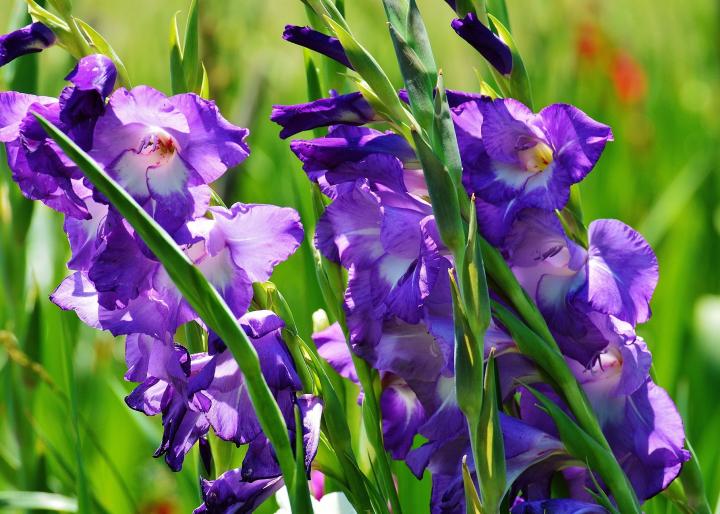
Sign up for our daily newsletter to get gardening tips and advice.
Planting, Growing, and Caring for Gladioli
ADVERTISEMENT
On 4/29/23, I planted gladiolus corms in an area where I thought they would get 6 to 8 hours of sun a day. As it turns out, once the sun is at its highest in the sky in the summer, the edge of the porch roof puts them in the shade. They grew plenty of leaves, but never any buds or flowers. This year, I noticed that two have already started growing and are about 4 inches tall. I'm hoping that maybe they were just confused last year because of the cool spring, and I'm hoping for bloom this year. Wish them luck! If they do the same thing this year, I will dig them up this fall and find another place for them in the spring.
This has me confused—
“Cure in a warm and airy location for 2 weeks at a temperature of 80 to 85°F (27 to 29°C).”
If I’m lifting the bulbs in the Fall temperatures are not 80 to 85°…….outside or inside.
Paula, Thank you for pointing this out. We’ve amended the information!
—The Editors
So, i just bought corms from a local nursery. I have no idea what variety other than the colour. I am planting them where they will get 4 to 6 hours of sun in the summer and 6 to 8 hours in the winter. I live in the tropics, so shall i expect the plants to die back in winter like the canna lilies, and ornamental turmeric and gingers? Do i need to dig them up or can i leave them in the ground year after year until they need thinning, as i do with the lilies and gingers? Thank you for your help!
It states that in USDA Hardiness Zone 8, put down a layer of hay or straw for winter protection. I feel compelled to caution against using hay. I have made the mistake of using hay, which is dried grass, as it may contains grass seeds. I am still pulling out grass sprouts! Straw is the better option.
Pls help. Planted store bought bulbs on Easter 2022. It's now May/28/22 and it looks like we planted grass. We have 12 smallest is about 18inches tall, biggest 24in. But it just looks like extra tall blades of grass. The instructions on the packet said plant them in groups, so we have 4 in each 6in diameter pot. After reading the article, I know I need replant. Will they flower soon? I don't even see any little buds. Any suggestions will be greatly appreciated
Hi, Keely, So you planted in pots? You seldom see glads in pots because they need depth to perform but that’s not to say you can’t replicate the conditions; the question is, did you? The guidance above is for in-ground but when planting in pots you have to consider similar conditions. So, above it says, Ready your garden by using a garden fork or tiller to loosen the soil to about 12 to 15 inches deep. Are your pots that deep? After loosening the soil, mix in a 2- to 4-inch layer of compost or aged manure. Did you do this? To ensure large-sized blooms, plant corms that are 1¼ inch or larger in diameter. Does that sound about right? (New, the corms should be the proper size.) Set the corm in the hole about 4 inches deep with the pointed end facing up. How about that: 4 inches deep? Cover with soil and press firmly. Space the corms 6 to 8 inches apart. This would be hard to do in a six-inch pot such as you describe. If it’s at all possible to get a larger pot (yes, it will require a lot of soil/compost/growing matter) or move them to a suitable spot in ground, you might try replanting them but remember that transferring any plant to a new locations involves a certain amount of upset and adaptation, so please understand that this may not be successful (may not produce the results you want) but it doesn’t sound like conditions are suitable for growth as it is. Sorry we don’t have better news.
Pls help..flowers die & then something like a bulb or nut pops up in the same plc of once flower, what is it?? What do i do ? The flowers r fabulous.
These are just seedpods. It’s normal once the flower stop blooming. They will not re-bloom this year.
We planted glads for the first time last year, and were thrilled with the results! We dug up the corms, which had grown in size, saved them in the house over the winter, and replanted this spring. They are blooming, but the color is remarkably different. All the bloomers so far are a much-faded yellow with a tinge of pink in the middle of the flower. We did have over a week of early extreme heat here in Zone 5. Could that have altered the color? Thank you!












